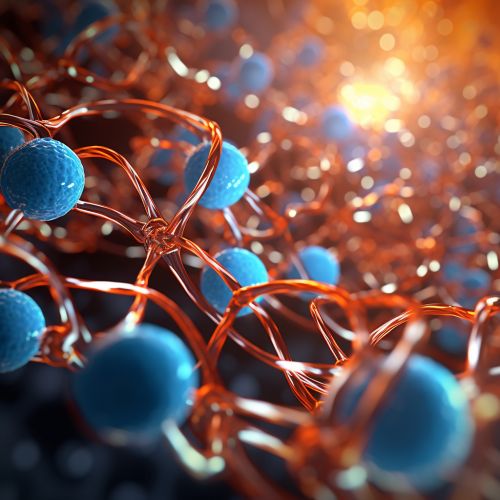Protein kinase
Overview
Protein kinases are a group of enzymes that modify other proteins by chemically adding phosphate groups to them. Phosphorylation, the process of adding a phosphate group, often results in a functional change of the target protein by changing enzyme activity, cellular location, or association with other proteins. The human genome contains about 500 protein kinase genes and they constitute about 2% of all human genes. Protein kinases are also found in bacteria, plants, and fungi. They are particularly important in cellular signaling, metabolism, cell cycle, and many other cellular processes.


Structure
Protein kinases have a similar structure that includes a small N-terminal lobe and a large C-terminal lobe. The active site, where the phosphorylation of proteins takes place, is located in a cleft between the two lobes. The N-terminal lobe is composed of a five-stranded antiparallel beta sheet and one alpha helix. The C-terminal lobe is primarily alpha-helical. The two lobes are connected by a single polypeptide backbone that forms a hinge region.
Mechanism of Action
Protein kinases catalyze the transfer of a phosphate group from ATP to a specific amino acid residue in a protein. This process is known as phosphorylation. The phosphate group is attached to an amino acid residue side chain, typically on serine, threonine, or tyrosine residues in eukaryotic protein kinases. The phosphorylation of proteins can alter their activity, and can result in an active or inactive state. Protein kinases are themselves activated or deactivated by phosphorylation, often by another kinase.
Classification
Protein kinases can be classified into groups, families, and subfamilies based on their sequence homology and other shared characteristics. The two main groups are the serine/threonine kinases and the tyrosine kinases. The serine/threonine kinases phosphorylate proteins on serine or threonine residues, while the tyrosine kinases phosphorylate proteins on tyrosine residues. There are also dual-specificity kinases that can phosphorylate all three residues.
Role in Disease
Abnormalities in protein kinases have been linked to a number of diseases, including cancer, inflammation, and neurological disorders. Mutations in protein kinase genes can lead to overactive or underactive kinases, which can disrupt normal cellular signaling pathways. In cancer, mutations in protein kinases can lead to uncontrolled cell growth and proliferation. Several drugs that target protein kinases have been developed for the treatment of cancer and other diseases.
